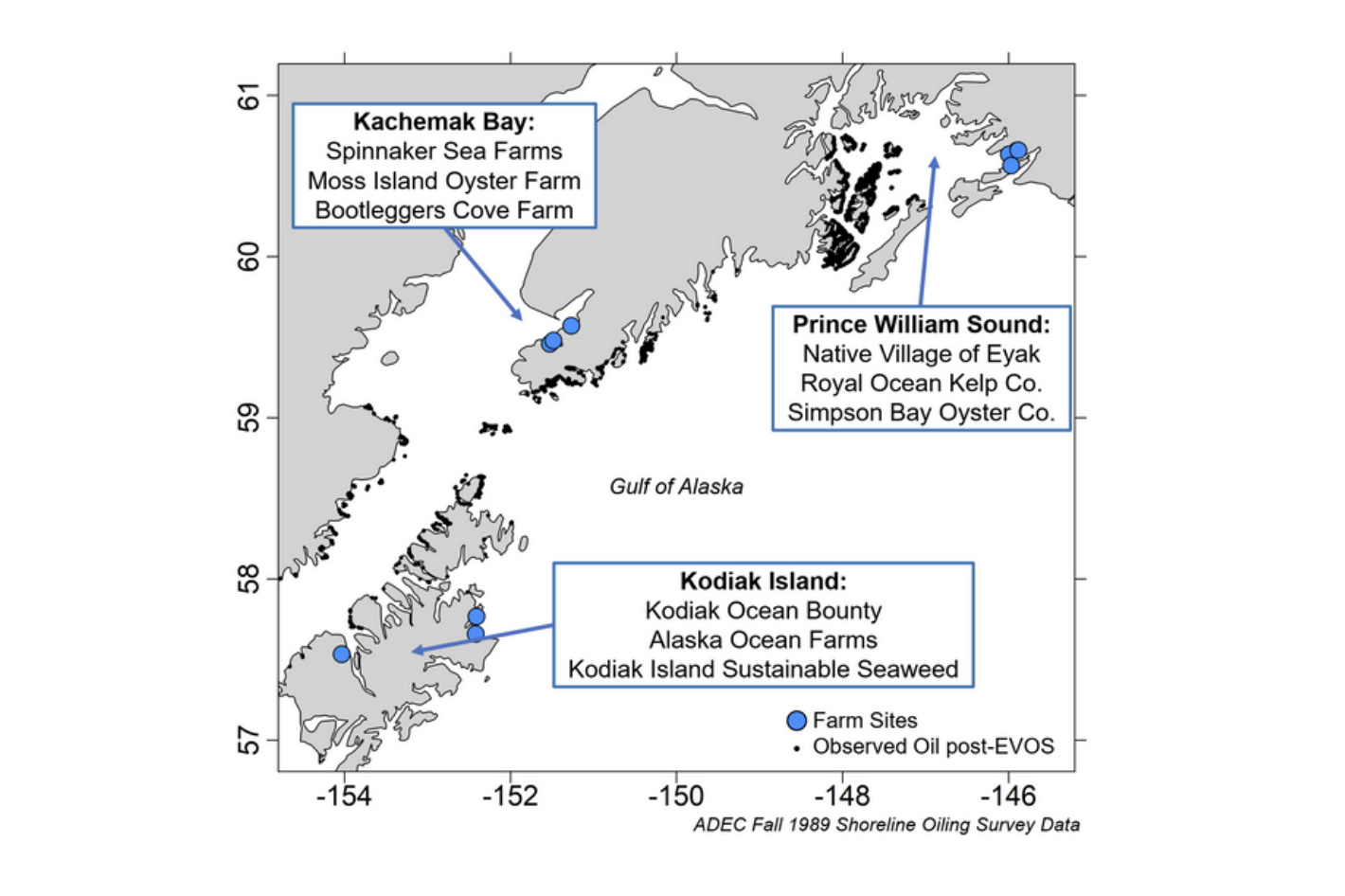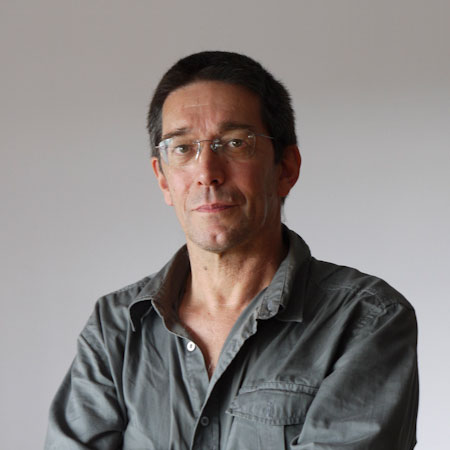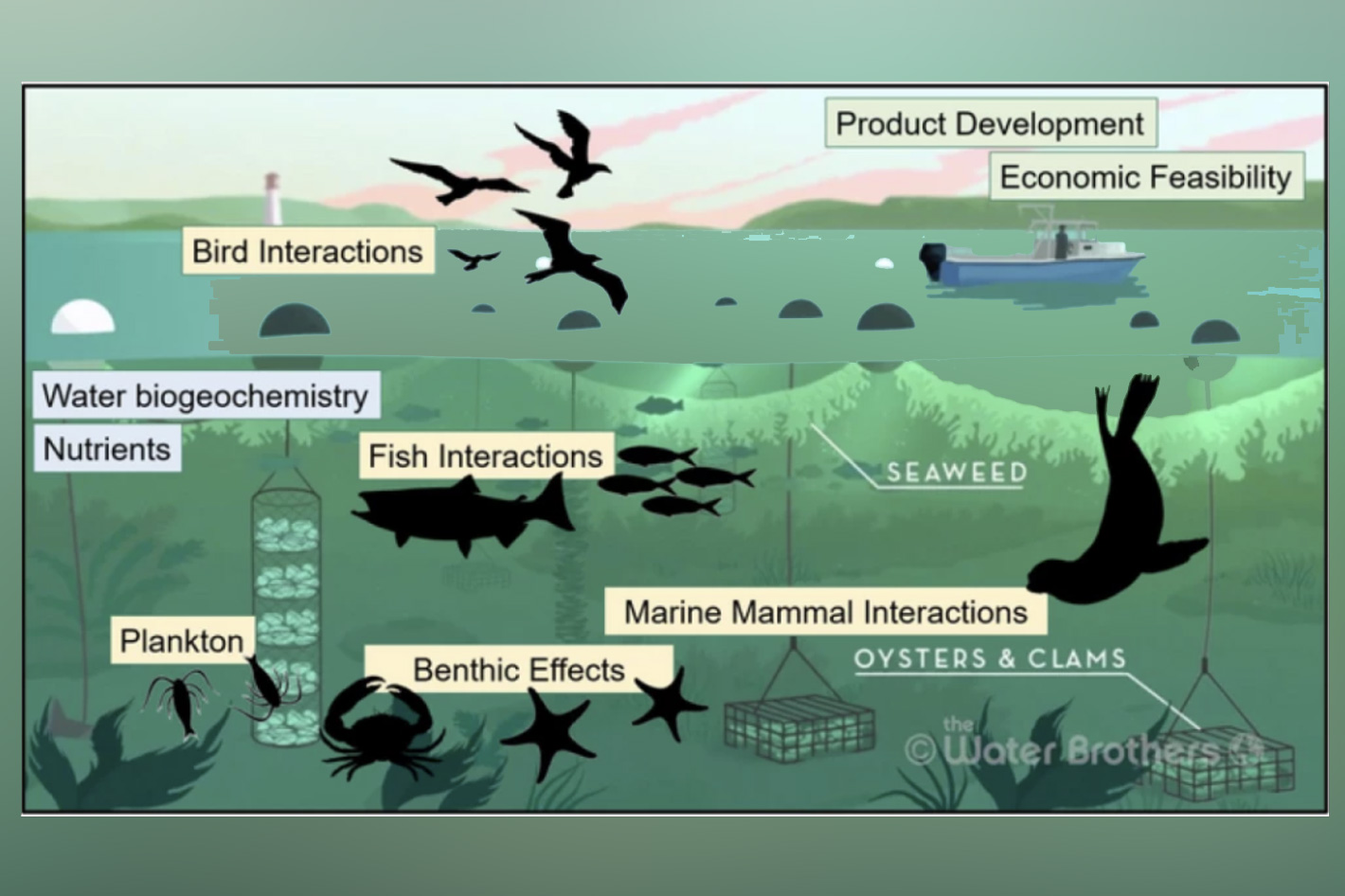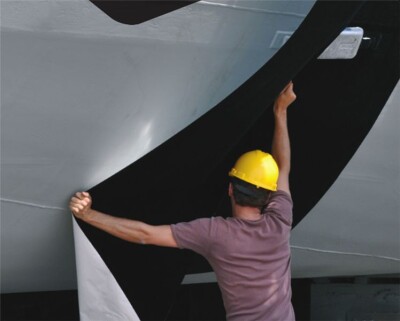Funded by the Exxon Valdez Oil Spill Trustee Council, the Mariculture Research and Restoration Consortium is a partnership between scientists and Alaska seaweed and shellfish farmers that will run until 2032.
Created to address the ecological effects of the mariculture industry in the Exxon Valdez oil spill (EVOS) affected area including Prince William Sound, Kachemak Bay, and Kodiak Island, the Mariculture Research and Restoration Consortium (Mar. ReCon) is a research and monitoring program which congregates the efforts from a series of organizations and institutions.
The Alaska Department of Fish and Game, Alaska Fisheries Development Foundation, Alaska Sea Grant, Axiom Data Science, NOAA Alaska Fishery Science Center, Prince William Sound Science Center, the University of Alaska Fairbanks, the native village of Eyak and shellfish and seaweed farmers will contribute to the project, which will, during the next decade, hold listening sessions in coastal communities, provide mariculture training opportunities and mariculture education programs, hold regulatory and management workshops and provide webinars.
The Alaska Fisheries Development Foundation (AFDF) also announced, this month, that it is part of the Mariculture Research and Restoration Consortium, a project funded by the Exxon Valdez Oil Spill (EVOS) Trustee Council with the goal to support restoration, habitat enhancement, and economic development through research and partnerships between scientists and seaweed and shellfish farmers. According to AFDF, data collection will start this year and the project will run for the next ten years, ending in 2032.
 Opportunities to the Alaska seafood industry
Opportunities to the Alaska seafood industry
AFDF is helping to facilitate collaboration between farmers and scientists, providing project outreach, and supporting research efforts to enhance farm production by better understanding regional variation between farms. Founded in 1978, AFDF is dedicated to identifying opportunities common to the Alaska seafood industry and developing efficient, sustainable outcomes that provide benefits to the economy, environment, and communities.
Project components include:
- Restoration: Address the ecological effects of the mariculture industry in the spill area.
- Farm and Business Development: Enhance the success of the mariculture industry in the spill area.
- Outreach: Coordinated outreach and education activities to make current scientific information and activities publicly accessible and serve ongoing, community identified needs.
According to the Alaska Mariculture Research and Training Center the project, with a funding of $26,375,000, aims to quantify the extent to which habitat restoration and habitat enhancement occur via mariculture activities, and amplify the economic development potential of mariculture by supporting capacity building and growth in the mariculture industry in the EVOS affected area.







